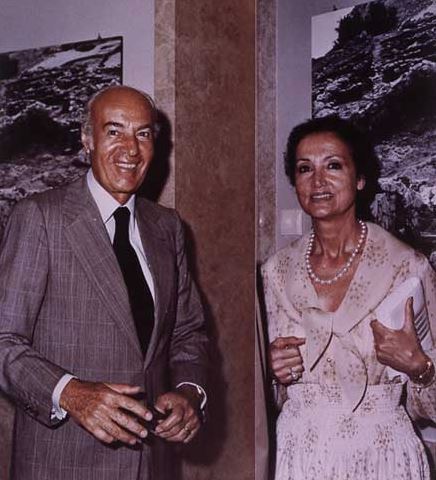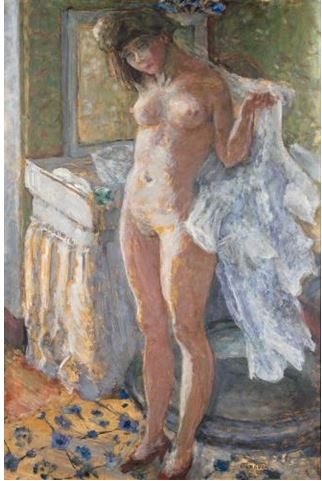Analysis
Panama Papers Shine Light On ‘Lost’ Collection of Greek Shipping Tycoon
A tangle of international transfers and disputed sale dates is revealed.

A tangle of international transfers and disputed sale dates is revealed.

A report released yesterday (April 7) by International Consortium of Investigative Journalists (ICIJ) reporter Jake Bernstein has provided what is perhaps the greatest amount of detail yet concerning secretive art maneuverings with respect to the leaked Panama Papers.
The trove of more than 11 million documents has been under analysis by the consortium for the past year, and the information revealed to date is stunning for what it shows about using offshore companies to secretly move around billions of dollars worth of art while attempting to minimize or completely evade taxes.
Related: What You Need to Know about the Latest Panama Papers Revelations
Among the highlights of Bernstein’s story is his account of the collection of Greek shipping magnate Basil Goulandris, who passed away in 1994, leaving behind a collection of more than 80 artworks by stars such as Cézanne, Chagall, Giacometti, Kandinksy, Monet, Matisse, Picasso, Pollock, and Renoir.
When Goulandris’s widow, Elise, passed away in 2000, her heirs found out that the art collection had apparently changed hands years earlier, and the paintings were now owned by a Panamanian company called Wilton Trading S.A., according to Bernstein’s story.
According to the report:
In 1985, according to Basil’s nephew Peter J. Goulandris, Basil sold the entire collection of 83 paintings for the extraordinarily low price of $31.7 million dollars to Wilton Trading. Despite the sale, the paintings never left the couple’s possession. During this period, Basil and Elise Goulandris lent the artwork to museums and sold pieces to dealers with the provenance listed as if the pieces belonged to them.
Bernstein reports that two lawsuits and a criminal investigation are underway in Lausanne, Switzerland in order to determine the whereabouts and rightful ownership of the collection. Bloomberg reported on this at length in February 2013, with Elise’s niece, Aspasia Zaimis, pursuing what she believed to be her share of the elusive inheritance in Swiss courts. She was named in Elise’s will.
Wilton Trading was purportedly created in 1981 but didn’t have directors until 1995. According to one Swiss prosecutor, the paper on which the sales agreement is inked “didn’t exist in 1985, and no one has been able to prove that any money changed hands,” according to Bernstein’s ICIJ report.

Pierre Bonnard, Dans le cabinet de toilette or Jeune fille s’essuyant (1907).
Image: Courtesy of Sotheby’s.
In November 2004, anonymous companies that were set up by Mossack Fonseca started selling some of the Goulandris paintings under the Wilton Trading umbrella. These included: a Pierre Bonnard painting, Dans le cabinet de toilette, sold by “Tricornio Holdings”; a Marc Chagall, Les Comédiens, sold by “Heredia Holdings,”through Sotheby’s, and another Chagall, Le violiniste bleu, sold by “Talara Holdings.”
All of the catalogue entries mention that the works are property of a “private European collection.” But only the Bonnard lists Basil Goulandris specifically. The respective holding company names are not mentioned in any of the lots, and both Chagalls list Pierre Matisse gallery in the provenance as well as numerous museum exhibitions.
According to the artnet Price database, the Bonnard went unsold at Sotheby’s London’s February 2005 sale of Impressionist and Modern Art, where it carried an estimate of $2.8 million–4.2 million (£2 million–3 million). The Chagall, Les Comédiens (1968), offered at the same Sotheby’s London sale, sold for $2.3 million (£1.2 million), on an estimate of $1.5 million–2.2 million.
An 1888 Vincent van Gogh depiction of a basket of oranges was sold to a California collector named Greg Renker in a private sale. The Van Gogh seller was a company called “Jacob Portfolio Incorporated.”
According to the report:
All four companies were registered just before the transactions and shuttered shortly afterwards, leaving no public trace of who was behind them. The documents now reveal that all four shared a mysterious owner: Marie Voridis.
The report says at least one of the transactions provides a clue to the identity of Voridis. On October 22, 2004, she transferred all rights to The Seamstress, an oil painting by Renoir, to “Talara Holdings.” Several weeks later, Talara Holdings transferred the painting back to Voridis.